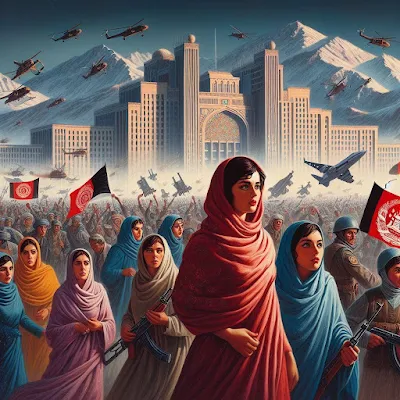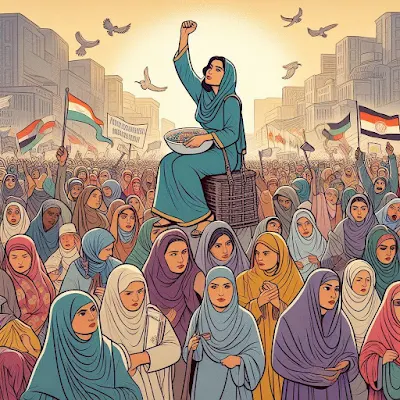The fight for women's rights in Afghanistan has been a long and challenging journey. From the early struggles for basic rights to recent advancements in education and political participation, Afghan women have faced numerous obstacles and triumphs. This comprehensive timeline explores the history of women's rights in Afghanistan, shedding light on the progress made and the challenges that still remain.
Early 20th Century: Women's Education and Activism Begin
In the early 20th century, Afghan women began to advocate for their rights and access to education. In 1919, Queen Soraya Tarzi established the first girls' school in Kabul, marking a significant milestone in women's education. This was followed by the establishment of the first women's magazine, Ershad-e-Niswan, in 1921, which provided a platform for women to voice their concerns and aspirations. Despite facing resistance from conservative elements in society, Afghan women continued to push for their rights and played an active role in the country's political and social movements.
1964: Afghan Constitution Grants Women's Rights
In 1964, the Afghan Constitution was revised to grant women certain rights and protections. This was a significant step forward for women's rights in the country. The revised constitution stated that women had the right to education, employment, and participation in political and social activities. It also prohibited discrimination based on gender. However, despite these legal advancements, the implementation of these rights faced challenges and women continued to face discrimination and inequality in many aspects of their lives.
1979-1989: Soviet Occupation and the Impact on Women
The Soviet occupation of Afghanistan from 1979 to 1989 had a significant impact on women's rights in the country. During this time, the Soviet-backed government implemented policies that aimed to modernize Afghanistan and promote gender equality. Women were encouraged to participate in education, employment, and politics. However, these advancements were met with resistance from conservative factions within Afghan society. As the conflict between the Soviet-backed government and the Mujahideen intensified, women's rights became a battleground issue. Many women faced violence, oppression, and restrictions on their freedoms. The Soviet occupation ultimately ended in 1989, but the impact on women's rights would continue to shape the struggle for equality in Afghanistan.
1996-2001: Taliban Rule and the Suppression of Women
The period of Taliban rule from 1996 to 2001 marked a dark time for women's rights in Afghanistan. The Taliban, an extremist Islamic group, implemented strict and oppressive policies that severely limited women's freedoms and opportunities. Under Taliban rule, women were banned from attending school, working outside the home, and even leaving their homes without a male guardian. They were required to wear the burqa, a full-body covering, and faced severe punishments for any perceived violations of the Taliban's strict interpretation of Islamic law. Women's rights activists and organizations were silenced, and many women lived in fear and isolation. The suppression of women during this time was a stark contrast to the advancements made during the Soviet occupation, and it would take years of struggle and resilience for Afghan women to regain their rights and freedoms.
2001-Present: Progress and Challenges in Women's Rights
Since the fall of the Taliban regime in 2001, Afghanistan has made significant progress in women's rights. The new government, backed by international support, has implemented policies and programs aimed at promoting gender equality and empowering women. Women have regained the right to education and employment, and many have taken on leadership roles in various sectors. Organizations and initiatives focused on women's rights have emerged, advocating for change and providing support to women across the country. However, progress has not come without challenges. Deep-rooted cultural norms and ongoing conflict continue to pose obstacles to women's rights. Violence against women, including domestic abuse and forced marriages, remains a pressing issue. Additionally, the resurgence of the Taliban in recent years has raised concerns about the future of women's rights in Afghanistan. Despite these challenges, Afghan women and their allies continue to fight for their rights and work towards a more equal and inclusive society.






Comments
Post a Comment
Welcome To Women Steps.